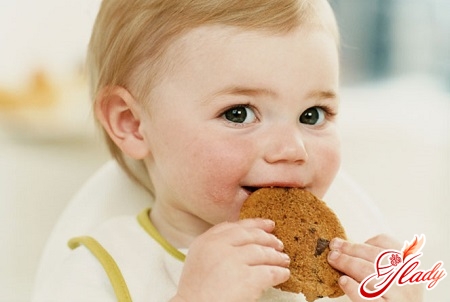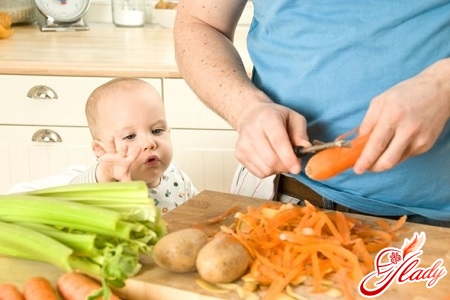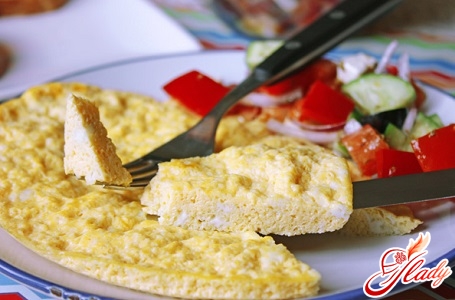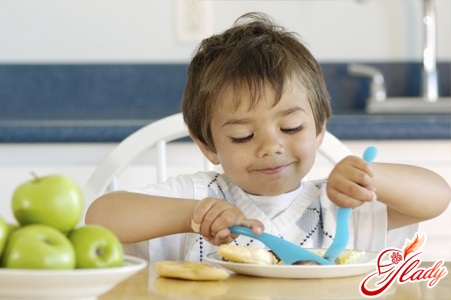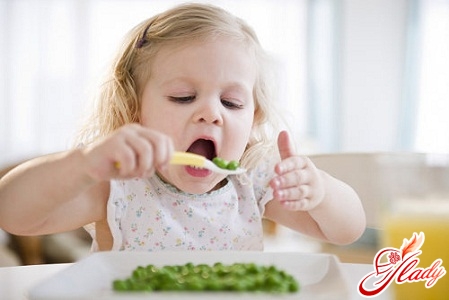
Your baby has grown up and is celebrating his very firstanniversary in life. He turned one year old. This is a big event for the family, because now your baby has turned into a one-year-old baby. He is going through a transitional period in many areas of his life. Habits and daily routine have changed, and new physical abilities have appeared. The baby is actively crawling and trying to walk. The more movements, the more actively calories are burned in the child's body, and as a result, his need for food changes. By the age of one, the baby will begin to try new and unusual foods, and such changes require time and patience from parents. Some significant changes have occurred in the body of the little person. He already has teeth, and he is improving his chewing abilities. The child tries to try everything for the first time "on the tooth." This is how the baby checks whether he can cope with hard objects. The baby is still getting used to it, eats only mashed and liquid food, so his interest in the new is understandable. A sufficient number of new enzymes have appeared in the baby's stomach, which help digest complex food. The new style of nutrition should not only be based on increasing the satiety of products, but also give the baby new taste impressions. If your child at this age drinks breast milk, this is not an obstacle to the new stage in the transition to unusual food, but is even considered a "plus" for his health. Let such changes be gradual and comfortable for your child. Nutrition changes, its caloric content increases, so you need to competently begin to make changes in the life of your child.
How much to eat and when?
Every mother knows her usual diet.your child and all his/her peculiarities. It is quite possible to leave 5 meals a day until the age of 2. It is worth paying attention to how eagerly the baby eats. If he/she does not want to eat during the last 5 feedings, feel free to reduce the regime to 4 meals a day, like adults. Doctors believe that the optimal interval between meals is 4 hours, during which time the food is digested, and children are ready to eat with pleasure. During the transition to a new lifestyle, try to strictly adhere to the feeding schedule. The baby should develop a reflex, in which the entire digestive system works better and appetite appears on time. With an irregular regime, enzymes are poorly secreted and food is practically not absorbed. Stop feeding the child between meals, especially sweets. At the age of 1 year, the need for energy increases significantly, to ensure that it is enough, increase the diet to 1200-1300 kcal. The amount of food approaches 1100-1300 ml. The baby should eat evenly throughout the day. Morning and evening meals account for about a quarter of the diet, lunch - about 35-40%, afternoon snack - only 10-15% of the daily volume. Products that are useful for a child should be balanced and natural, contain for each kg of the child's body weight: protein and fat - about 4 g, and carbohydrates - about 15 g.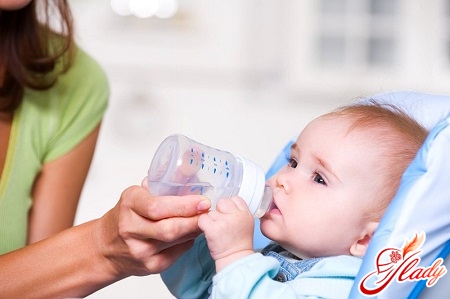
Breast milk: remove or leave
One year of the baby's life is behind you, you are changing himdiet, but what about breastfeeding? Although the baby is no longer a baby, his need for mother's milk still remains. Pediatricians are convinced that even at this age, the baby receives a lot of vitamins and substances that promote the proper development of the nervous system and antibodies that resist infections from breast milk, which he continues to feed on. In most cases, by the age of one year, the mother stops breastfeeding the baby as an infant. But it is worth remembering that a huge and important place in the diet is given to dairy products. They provide the body with B vitamins, enrich the bones with calcium and supply natural protein and fat. Try offering your child kefir (starting with 100 ml per day), delicious yogurt (up to 200 ml). Watch the quantity, an excessive amount of fermented milk products can overload the baby's stomach and provoke loose stools. Choose products specially designed for children. They do not contain a lot of fat and exclude the ingress of harmful chemicals into the baby's body. Buy "live" yogurts, they contain special live cultures that maintain a healthy environment in the intestines. Add cottage cheese and cheese to the diet. After a year of life, increase the amount of cottage cheese to 60 g daily. If the baby liked cottage cheese without additives - great. Otherwise, cook light dishes from it. Casseroles, for example. Cheese is a very healthy product for children of different ages. It simply must be included in the diet. This product can be used both as an additive to ready-made dishes, and in its pure form. Offer the baby a piece of cheese, let him gnaw it with his teeth. Gradually introduce low-fat sour cream. Choose the lowest calorie cream and offer the baby very little, or better yet, as part of prepared dishes.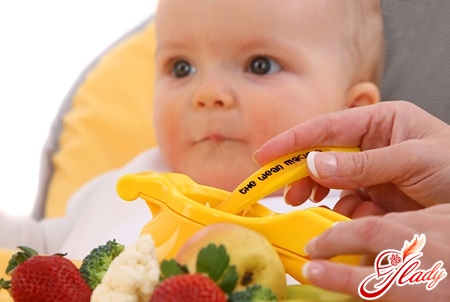
Vegetables and fruits on the table
After one year there comes a point whenThe baby can be introduced to new berries and tasty fruits. Mom should understand that new products can cause allergies. Observe how the child perceives new food. Offer the baby cherries, strawberries, cherries, peaches, kiwi, gooseberries, raspberries, cranberries, blueberries. Citrus fruits can also be given to the baby. But do not overdo it - such fruits are quite acidic, and they can harm the baby's stomach, causing allergies. Let the baby eat berries in the form of puree. Their skin is dense, and it will be difficult for the baby to swallow them, he can choke. If the fruit is soft (apricot or kiwi), cut it into slices. Doctors do not recommend giving grapes to little ones at one year. They are difficult to digest and increase intestinal peristalsis, cause fermentation and abdominal pain. The optimal amount of fruit in the diet is 200 g daily. Get your baby used to natural juices (preferably sugar-free), you can drink up to 80-100 ml per day. The vegetable menu should be supplemented with healthy products: tomatoes, beets, carrots, turnips, beans, green peas. Remember that legumes should be heat-treated, as they cause gas and colic, and children will suffer from pain. Vegetables are most often used as a first course. And boiled and mashed to a pulp can be used for delicious side dishes. Add vegetable oil to the diet, preferably at the end of cooking a vegetable dish.
Meat, fish and egg
A must-have product for one-year-old babiesis meat - about 100 g per day of intake. It is rich in protein and essential amino acids for a growing organism. Add cutlets, meatballs, meatballs and steamed casseroles to the new regime. Use those types of meat that contain a minimum of cholesterol: veal, beef, occasionally lean pork, chicken, turkey. Liver, heart, tongue are very useful for the baby. Do not abuse goose or duck meat, as well as lamb. Such products are very difficult to digest in excess. When drawing up a proper feeding regimen, fish is an irreplaceable and valuable element. Give it 30 g, replacing a meat dish. Twice within 7 days will be enough. It must be steamed, and meatballs, cutlets or fillets are easy to stew. For the first year of life, both chicken and quail eggs should be present in the food. They are easily digestible and contain useful substances, vitamins and amino acids. At this age, children are allowed to boil and bake eggs. Cook them 3-4 times a week, a serving is half a chicken egg or a whole quail egg.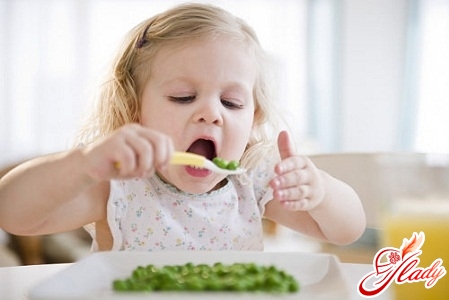
Cereals and bread in the diet
A one-year-old baby needs cereals.Healthy food includes buckwheat, oatmeal, rice, millet and others. Cook porridges that boil well, they are easier to chew and swallow. Use pasta as a dressing for soups or a side dish. You do not need to cook them too often. Once a week is enough to get carbohydrates from these products. Add bread to a full diet, preferably white (up to 1.5 years), it is easily digested and gives energy to the body. The optimal portion per day is 100 g.
Adding Drinks and Sweets
There is no need to control your fluid intake.The needs of each child here are individual. This may be due to heat, abundant food or just habit. Offer him water (preferably for baby food), juices (vegetable or fruit), compotes, fruit drinks (preferably without sugar), herbal tea (chamomile, lemon balm). Mineral water and soda are strictly contraindicated for children under 3 years old! Instead of sugar, use natural and healthy fructose. Add it to sweeten ready-made meals and compotes. It is easily absorbed and does not overload the pancreas. Rarely, you can pamper your baby with fructose sweets: jam, marshmallows. If he is not allergic, honey will be a tasty and healthy product. Observe the total amount of sugar: no more than 25-30 g per day. Stick to a new and healthy regime and be healthy!




